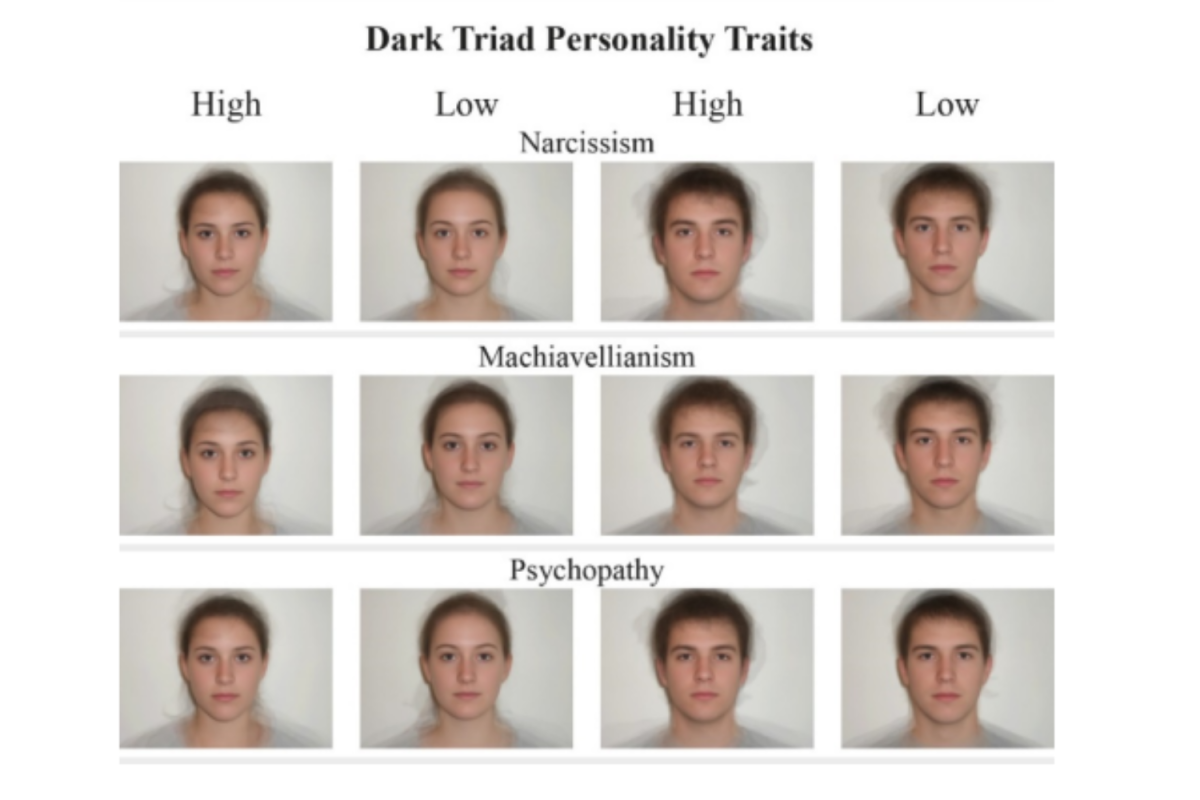Can you tell if someone is a narcissist—or even a psychopath—just by looking at their face? According to a new study, the answer is yes.
Researchers from Yasar, Baskent, and Kadir Has Universities in Turkey conducted three studies involving 880 participants from the United States and Turkey.
They found that people were able to accurately infer all three components of the so-called “dark triad”—psychopathy, narcissism, and Machiavellianism—based solely on looking at facial images of strangers.
Psychopathy—characterized by impulsivity, deceitfulness, and lack of empathy—was the most accurately inferred of the three traits. Participants looked at composite face images created from using images of individuals with extremely high or low scores on personality inventories, and participants were asked to guess which face had more of a particular trait.
Another study published earlier this year revealed that people with dark triad traits are often perceived as more attractive, but the ability to recognize and identify these people has roots in evolution.
In the new study, the authors suggested that inferring personality from facial features, especially traits that signal a threat or potential harm, could be an adaptive mechanism.
“Inferring personality from faces without any concrete source of information might be an evolutionarily adaptive trait,” they wrote.

Some of the composite face images used in the research, retrieved from Faceaurus database (Holtzman, 2011).
Some of the composite face images used in the research, retrieved from Faceaurus database (Holtzman, 2011).
Faceaurus database Holtzman, 2011
Spotting friendly faces
The study also tested whether participants could detect traits from the “big five” personality model—traits like agreeableness, extraversion, and conscientiousness. Results here were mixed. Agreeableness, which includes qualities like trustworthiness and warmth, was the most consistently identifiable of the big five, especially in male faces.
Interestingly, participants consistently struggled with identifying openness and neuroticism—two traits that were actually misidentified more often than not. Similarly, extraversion was only accurately detected in women’s faces, not men’s.
Cultural differences and similarities
What sets this study apart from earlier research is its inclusion of both WEIRD (Western, Educated, Industrialized, Rich, and Democratic) and non-WEIRD populations.
To test whether personality traits are visible in people’s faces, researchers used composite images from the Faceaurus database, developed by psychologist Nicholas Holtzman. These images were created by blending the faces of real people who had scored very high or very low on traits like psychopathy, narcissism, or agreeableness.
Although the faces were based on American participants, they were shown to people in both the U.S. and Turkey to see if judgments held up across cultures.
“All dark triad traits were found to be visible in prototypical faces,” the study’s authors wrote. “This finding replicated across three samples spanning WEIRD and non-WEIRD contexts.”
Despite this, the composite images were still only made to look Caucasian, as a result study authors noted that future research should use a more diverse set of images.

A file photo of a man pulling a smile onto his face.
A file photo of a man pulling a smile onto his face.
ajr_images/Getty Images
How to spot dark triad personalities
While these results show that the dark triad can be identified with looks alone, psychology professor Jason Walker of Chicago’s Adler University who has studied the dark triad told Newsweek that there are other ways to detect a dark triad personality.
“Stop mistaking charm for character. Narcissists are often highly performative and skilled at telling people what they want to hear,” Walker said.
“Watch how they treat those with less power. True character is revealed in how someone engages with people they don’t need to impress.”
He said that while looks may open the door, trust should be earned through true personality, not charisma or curated image.
“Pay attention to subtle power plays—like monopolizing credit, gaslighting dissenters, or constantly shifting blame. These are not quirks, they’re red flags,” Walker explained.
Do you have a tip on a science story that Newsweek should be covering? Do you have a question about psychology? Let us know via science@newsweek.com.
References
Alper, S., Bayrak, F., & Yilmaz, O. (2021). All the Dark Triad and some of the Big Five traits are visible in the face. Personality and Individual Differences, 168. https://doi.org/10.1016/j.paid.2020.110350
